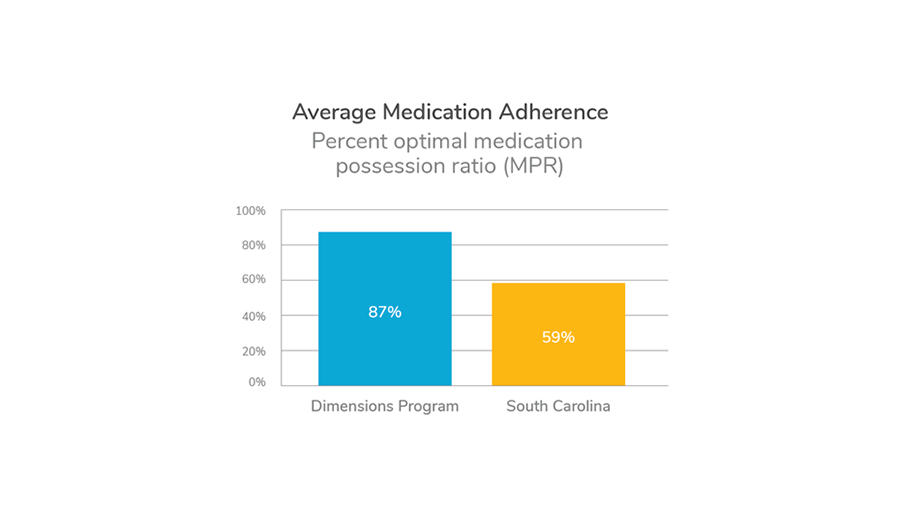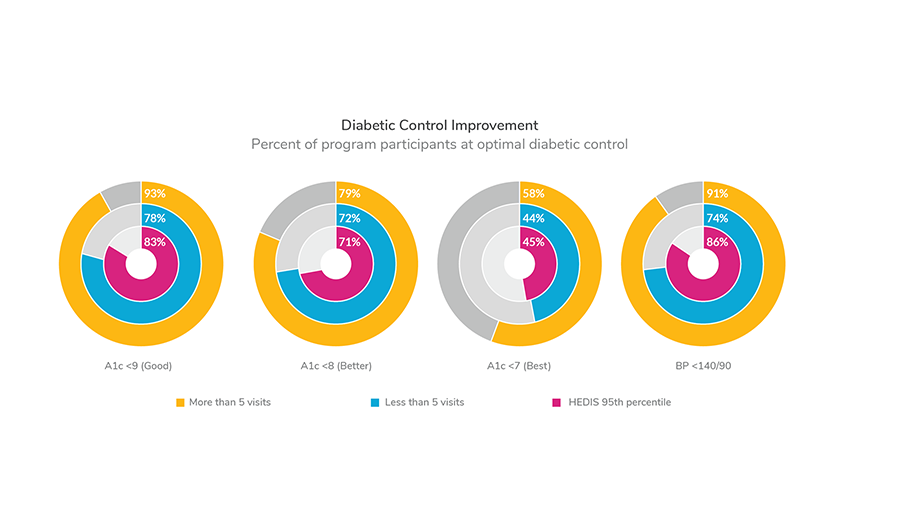How a diabetes education program saved money, improved outcomes, and increased provider productivity
Since 2008, BMW has been partnering with Premise Health to implement a diabetes education program at their automotive manufacturing facility in South Carolina. Through this program and an integrated approach, Premise Health onsite pharmacists and providers work collaboratively to deliver face-to-face counseling, medication, and regular follow up to ensure success.
The Challenge
Diabetes is a major cause of concern for the U.S. population. Nearly 30 million Americans live with diabetes, and it’s estimated the number will rise to 44.1 million by 2034. In addition, annual diabetes-related direct medical spending is likely to grow to $336 billion by 2034. Employers take on a major part of this direct medical cost burden and face a significant indirect cost burden. Estimates show diabetes costs employers $2.6 billion in absenteeism, $20 billion in presenteeism (120 million workdays with reduced performance) and nearly $7.9 billion in annual disability costs.
The Solution
The objective of the diabetes management study was to assess the impact of a pharmacist-delivered member education program at the onsite pharmacy. The program consisted of monthly face-to-face interactions between the pharmacist and the enrolled members. These one-on-one meetings were customized to meet the individual needs of each member to help them manage their diabetes.
Premise Health onsite pharmacy programs are designed from the ground up to improve engagement and change behavior–two keys to success with chronic disease management. Unlike retail or other clinical settings, our pharmacists are conveniently located onsite and have the training, as well as the time, to provide in-depth guidance that people with chronic conditions need.
Overall, the program was able to:
- Save $1,050 per participant per year
- Increase provider productivity by 18%
- Exceed the HEDIS 95th percentile
The Outcome
Over a 24-month evaluation period, members who met with a diabetes education program pharmacist five or more times achieved optimal diabetic control improvements in systolic and diastolic blood pressure, as well as HbA1c values. Based on study results, program participants reduced healthcare expenses by approximately $1,050 per enrolled member per year.
Program performance was measured against the Healthcare Effectiveness Data and Information Set (HEDIS), a tool used by more than 90% of America’s health plans to measure performance on important dimensions of care and service. Premise Health achieved clinical results ranking in the top 5% of health plans across the country, exceeding the HEDIS 95th percentile. Typically, the gold standard pursued by most direct healthcare plans rank at the HEDIS 75th percentile.
Medication adherence played a key role in the success of the program. Of program participants, 87% were found adherent to their prescribed medications and self-care practices – this has been shown to reduce complications and greatly impact medical spend in diabetic members. And because better managed, well-controlled chronic conditions are less of a burden on provider time, the pharmacist-led program was also able to increase onsite medical provider productivity by 18%.

The Takeaway
Programs which improve health, reduce spend, and allow providers to engage complex members can play an important role in helping employers maximize their healthcare dollars and resources. Overall, these findings are consistent with previous studies of pharmacist-led diabetes education programs and are a testament to the value of continued member engagement with a focus on education, health coaching, and improved self-management. This indicates that onsite pharmacies can serve as an ideal location for implementing cost-effective education programs for management of chronic illness that in turn, can improve the health status of a workforce.




